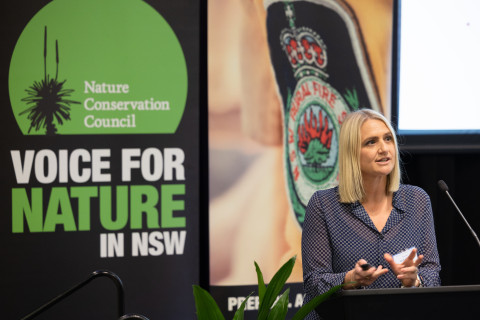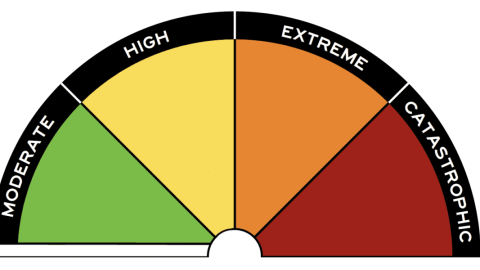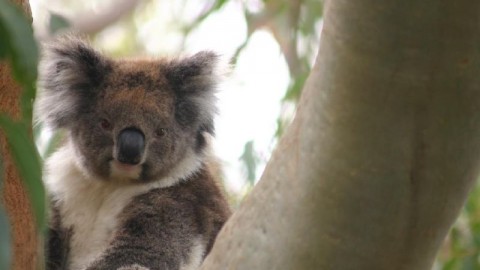Nature Conservation Council hosted our 13th Biennial Bushfire Conference Managing Bushfire Together: Applying science, skills and stories” on the 24-25th May 2023 as a hybrid event. For more information about the event read here.
All oral presentations are available to watch online. This includes 11 hours of recordings from 8 sessions held over two days of the conference. You can follow this link to access all 8 sessions via vimeo here.
Or you can have a read of some key speaker highlights and direct links to each session below (via the “WATCH links”.
For a list of all sessions and speakers see the Conference Program available here.
Each and every one of our 48 speakers brought knowledge, experience and new insights to share at the conference. The below are just a snapshot of the conference addresses and keynote speakers, but feel free to explore the program and recordings to listen to the wisdom shared by all. Presenter names and timestamps are located below each recording within each session so you can jump to the presentations you are most interested in.
WATCH Session 1. Opening Addresses: Fire and Country: Here and now
Address: Commissioner Rob Rogers, NSW Rural Fire Service outlined the severe impacts of the 2019-2020 bushfires and the advancement and programs that the NSW Rural Fire Service are implementing since. This includes alternative ways to manage landscapes with environmental considerations, improving operational capability, cross-agency accountability, and risk management.
Address: Atticus Fleming, A/ Coordinator General, Environment and Heritage Group, described the role of NSW National Parks and Wildlife Service in bushfire management (reducing risk) and bushfire suppression, as well as improving ecological health (e.g. Assets of Intergeneration Significance), supporting cultural fire management, and innovating new methods.
Address: Darren Grover, Head, Healthy Land and Seascapes, WWF-Australia, informed how WWF-Australia are contributing to response and recovery efforts at large scales across the country following the Black Summer fires. He highlighted projects of the Australian Wildlife and Nature Recovery Fund which has supported > 225 projects with 135 partners (at that time), and shared how they successfully worked together.
Keynote: Oliver Costello, Jagun Alliance Aboriginal Corporation, emphasised the importance of connection to country and how this in intertwined with cultural fire, relationships with kinship, identity and landscapes. He gave an inspiring presentation on how we can learn from each other, and the need and importance of embedding cultural practices and enabling pathways for cultural burning.
WATCH Session 2. Heat: It’s getting hotter – how do we manage it?
Keynote Dr Sarah Harris, Country Fire Authority, set the tone for how Climate Change is influencing bushfires in south-east Australia via weather conditions, ignition sources, fuel dryness and biomass. It is predicted to be hotter and drier, with longer fire seasons and more extreme conditions and threats to vegetation. The impacts are vast- affecting fuel management practices, response and readiness for our communities. However there are opportunities to adapt including building up evidence for community engagement, capacity and capability building, innovation and research.
WATCH Session 3. Oxygen: Fire for biodiversity
Keynote: Prof David Lindenmayer, The Australian National University explained how the frequency and extent of fire is increasing in SE Australia and how we can better manage forests for conservation in light of restoration and flammability considerations. He shared research revealing that high severity fire is linked to forest logging, with logged forests sustaining highest severity fires during moderate conditions, comparative to unlogged forests in extreme fire conditions. Landscape change resulting from broad scale logging increases risk from fire, as younger forests exacerbate the cycle of repeated fire, thereby minimising the potential for forests grow to maturity. Forest thinning does not necessarily reduce fire severity. David concluded that more old forest is needed to reduce flammability and salvage logging should be ceased.
WATCH Session 4. Oxygen and Fuel: Fire, conservation and communities
WATCH Session 5. Heat Again: How to work with it?
Keynote: A/Prof Lauren Bennett, The University of Melbourne made clear the importance of forests as keystones to carbon cycles and how they underpin ecosystem function and life. Fire contributes to this cycle as a carbon source, sink or neutrality. Frequent, high severity fires in fire-tolerant forests can decrease trees and ecosystem function resulting in longer recovery times and can impact upon carbon sources and stability. Future fire regimes of more frequent and severe fires can affect landscapes and carbon neutrality in space and time and need to be considered in forest management.
WATCH Session 6. Oxygen and Fuel: Fire ecology and community connections
Keynote: Prof Euan Ritchie, Deakin University highlighted interactive threats to ecosystems that are driving extinction including changed fire regimes, invasive species, habitat loss and other threats via both habitat-mediated pathways and community-mediated pathways. Predators and prey respond differently to fire. A drying climate with reduced rainfall is likely to become a significant factor, but all threats need to be considered. Ecosystem management is complex and needs to be based on rigorous science and knowledge, and greater collaboration is key.








